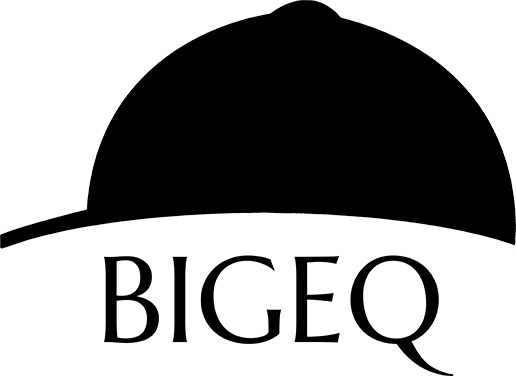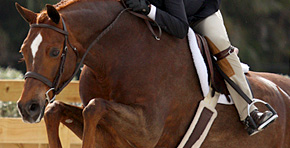By Kim Ablon Whitney

It was my great pleasure and quite an honor to judge the Washington Equitation Finals. Unlike the other finals where you have to slog through hundreds of rounds, the Washington invites only the top 30 in the point standings throughout the qualifying period to compete in the final, which includes a hunter phase, a jumper phase, and a final work-off.
The Washington Eq Class is a special class in the way it was designed with the different phases. I don’t know who came up with the idea but my guess would be that they wanted judges to examine the equitation rider for his/her competence in the hunter realm and the jumper realm. Some eq riders do tend to be more oriented to the hunter-style of riding and others to the jumper-style, given their various backgrounds.
Hunter Phase
In the hunter phase of the Final, what we judges wanted to see was a beautiful hunter trip ridden with equitation style. A smooth, soft, subtle ride. Stiffness in the rider, not following the horse’s mouth over the jumps, or too erect positions were faulted.
The class sorted itself out pretty naturally into three groups. There were the top 4-6 riders who scored in the high 80s. These were the beautiful rounds by riders with impeccable style and form.
Then there was a larger clump of riders with scores in the low 80s and high 70s. Either these riders had a slightly imperfect distance to a jump or some of the style faults mentioned above. Finally there was a smaller number of riders who scored rather low due to bigger faults of performance or style.
We judged the class in three pairs. I sat with Timmy Kees, a fabulous judge and a legendary equitation trainer. The other panels were similarly qualified and accomplished judges, Sue Ashe and Kim Dorfman, and Tammy Provost and Phil DeVita. The three pairs were positioned at different viewpoints around the ring. For the hunter phase Timmy and I were in “one of the corners” which learned was not the optimal viewpoint of the ring. From the corner it was harder to see some of the jumps at the far end of the ring. (For the jumper phase and work-off Timmy and I got to sit in the middle position and it was much easier to see all the jumps from there.)
Each panel gave its score without hearing the other scores. Timmy and I were always right on the same page in determining a score and mostly we just discussed whether a score should be a point or two higher or lower. When all the scores were posted to the board, it was our first time seeing them too. Generally we were all right on track. I noticed that if anything Timmy and I seemed to score a little bit higher than the other panels but because there are three panels and because we scored higher consistently throughout the class, it all worked out.
Only a few times were there larger differentials between the panels. When we convened after the class to discuss how it went, it became clear there were issues where one panel either saw or did not see something the others did. Usually it was a jump that looked worse given the panel’s position in the ring. Another example of this was Jessica Springsteen’s few strides of cross-cantering around the corner of the ring. Timmy and I thought we saw this but weren’t positive and as a judge you never want to penalize a rider too harshly for something you aren’t sure you saw—that is the equivalent to sending someone to jail for minimal evidence. It’s always better to let them go free! We gave Jessica an 81 for some other faults on the course with the cross canter our score should have lower. This is where having the three panels is so wonderful—if a panel misses something the others catch it. The two other lower scores kept Jessica out of the running for a top prize in that phase.
In the end, all six judges were very pleased with the results. Samantha Schaefer won the phase with a beautiful hunter trip—soft, smooth, and subtle with incredible style and position.
Our only criticism of the hunter phase was that the horses were sent into the ring a little too quickly. Oftentimes a horse was starting its trip when the scores hadn’t been called in. The result was that we felt slightly rushed and Timmy and I agreed we wished we had a moment or two more to discuss each trip. We talked to the manager of the show, David Distler, and he promised this would be rectified for round two. David is always true to his word and the issue was resolved for the jumper phase.
Jumper Phase
The jumper phase was in the late afternoon and I got all dressed up in a nice suit and blew out my hair so that I’d look my best. Of course halfway on the walk over to the Verizon center from the hotel the skies opened up and started pouring! I was walking over with Timmy’s wife, Jenny Belknap (herself a former Washington Best Child Rider on a horse winner) and neither of us had a coat or an umbrella. Thinking on our feet, we saw some city workers with large garbage cans picking up trash and I asked if they had any extra garbage bags. They were nice enough to lend us two bags and we poked a hole in the top for our heads. We must have been quite a sight walking down the street wearing out garbage-bag-rain-ponchos! But in the end I was only soaking wet from my knees down! So much for my vanity!
The course for the jumper phase was fairly straightforward. The second to last line proved to be the biggest test. It was a bending line oxer-oxer-skinny vertical. Most riders did a quiet five to a quiet five, which in our minds was the right choice. A few attempted a four to four. The trick was to not over-use the bend in the first five but instead to be able to rely on your horse’s elasticity to come back to fit the first five in. A few riders got lost staying out too much to try to use the bend in the first five and either lost their way and did six, or made the line to the second five more awkward. Some riders who didn’t set up the line well had the rail at the skinny and we deducted four points for each rail throughout all the phases. With the top riders separated by fractions of a point, even just a cheap rail could hurt a rider’s chances of being in the top placings. I don’t love that fact, but that is the way the class is judged.
Again, the rounds separated themselves into three categories. Chase Boggio rode a breath-taking round to take the lead on our card with Molly Braswell, Samantha Schaefer, Tina DiLandri and Lucy Davis not far behind. There were certainly the usual few disappointments where someone who had ridden well in the hunter phase came in and made a big mistake. As a former eq rider myself, I know firsthand how hard that can be!
The Final Ride-Off
The Final Ride-Off in the Washington Class has the top ten riders from the first two phases switch horses and negotiate the same course as the jumper phase. I’m not exactly sure how the lineup of who rides which horse is chosen but it seemed to be computer-generated and therefore random. The first placed rider did not necessarily ride the tenth place horse, etc.
It was really fun to see the riders on the different horses. It’s a hard task to hop on an unknown horse and we were slightly more generous with our scores accordingly. We saw a lot more missed distances than in the previous rounds, as riders were out of synch with the unknown mounts. But all in all, everyone rode admirably. Several times we actually felt a rider looked better position-wise on their new mount! This was the case for Alexandra Arute, who was in the process of putting in the most spectacular round aboard Taylor Kain’s, mount only to do an unexpected four-to-four in the bending line.
We were impressed by Lucy Davis’s ride on Samantha Schaefer’s horse, which doesn’t look easy to ride. Lucy was a little deep to one jump but otherwise rode the horse very well. Samantha drew Lucy’s horse—another horse that didn’t look particularly easy—and also rode it very well. We had her second on our card.
One point in front of Samantha on our card was Chase Boggio, who rode a beautiful round on Molly Braswell’s horse. Perhaps he’s even had the luck of riding this horse before since Chase and Molly both ride with Bob Braswell. Either way, we thought his round was nearly flawless. The other two panels had him just below Samantha, which perhaps could be because his horse landed on the wrong lead in the second part of the five-to-the-five line and didn’t swap. While landing on the correct lead, or swapping, is technically preferable, both Timmy and I agreed that he kept his horse so well balanced that we didn’t mind and that his overall style and look warranted the higher score.
The scores from all the panels were combined throughout the three phases and Samantha came out on top. She was definitely the most consistent overall throughout the phases and deserved the win with Chase in second. Tina DiLandri finished third and Lucy Davis in fourth.
For more information about Kim or to contact her, please visit her website http://www.kimablonwhitney.com
Posted in Bigeq Guest Bloggers ,

 Favorites
Favorites


















